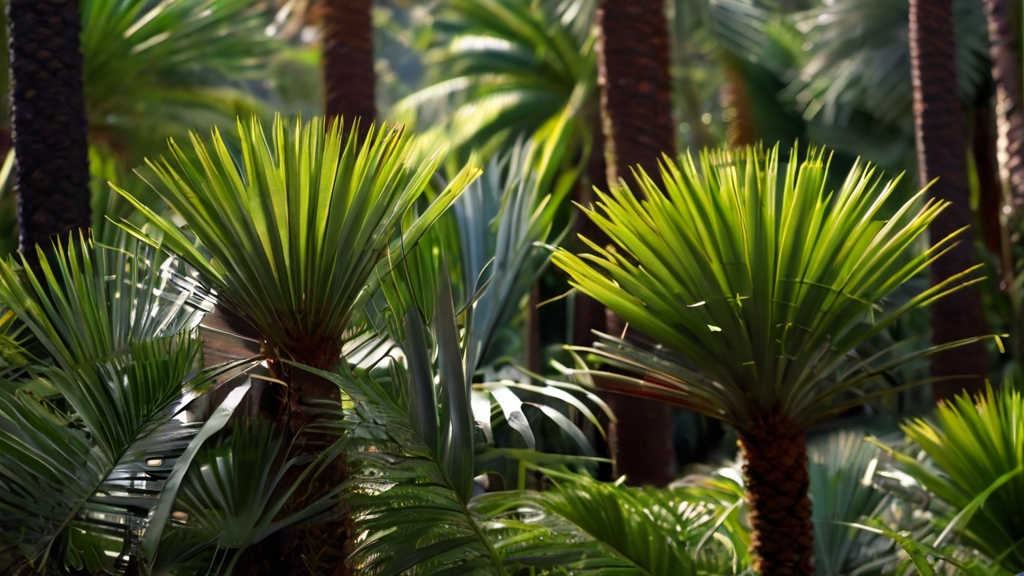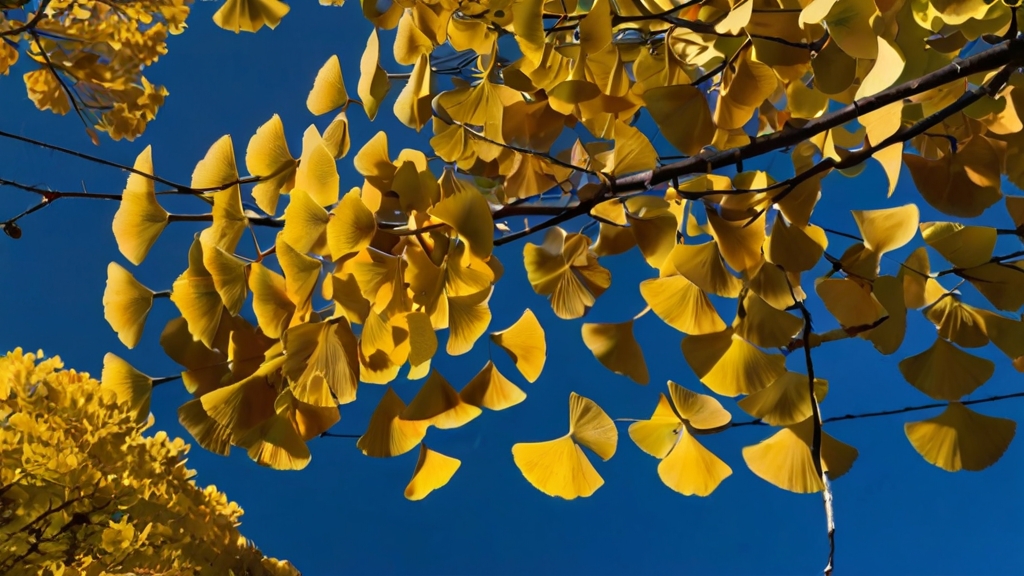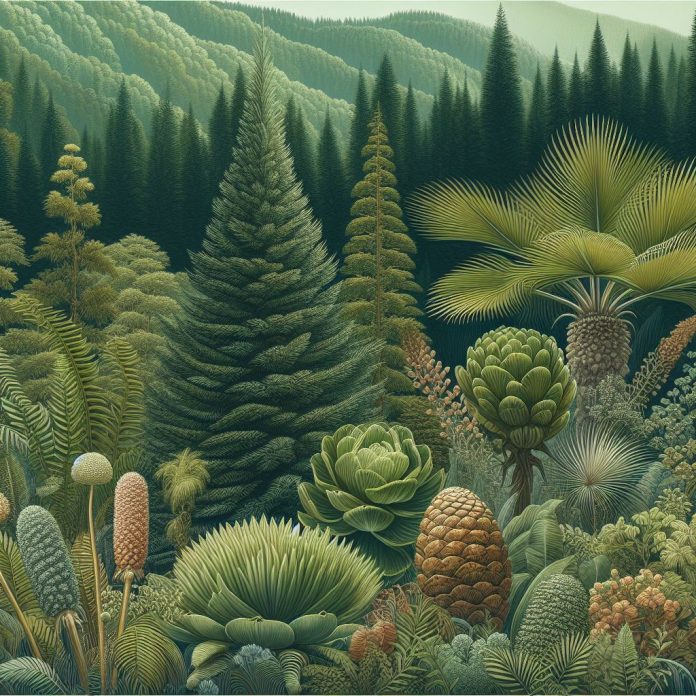Introduction
Gymnosperms, which derive their name from the term “naked seeds,” encompass a wide array of seed plants. The “anthophyte” concept posits that the angiosperms can be considered a sister group to the gymnosperms, namely the Gnetales. This classification places the gymnosperms within a paraphyletic group. The term “paraphyletic groups” refers to groups that do not encompass all descendants of a singular common ancestor. The “netifer” hypothesis posits that gnetophytes are connected to conifers, resulting in gymnosperms being monophyletic and angiosperms being related to gnetophytes. Additional molecular and anatomical investigations have the potential to elucidate these associations. The gymnosperms possess several distinctive features, such as unadorned seeds, distinct female and male gamtophytes, pollen cones and ovulation cones, pollination facilitated by wind and insects, and tracheids responsible for the transportation of water and solutes within the vascular system.
Gymnosperm seeds lack an ovary and instead receive some protection from modified leaves known as sporophylls. The name strobilus, in its plural form, refers to a dense cluster of sporophylls encircling a central stalk, as observed in pine cones. Upon reaching maturity, certain seeds become covered by sporophyte tissues. The integument refers to the layer of sporophyte tissue that envelops the megasporangium and subsequently, the embryo.
During the Mesozoic epoch, gymnosperms emerged as the prevailing phylum. They have evolved to thrive in environments with limited freshwater availability, such as bogs with nitrogen-deficient soil. Hence, the evergreen conifers continue to have a dominant position inside the coniferous biome or taiga, whereby they possess a distinct advantage in adapting to cold and arid climatic conditions. During the cold months, evergreen conifers exhibit reduced levels of photosynthesis, thereby preparing themselves to capitalize on the initial sunny days of spring. One drawback of conifers is their heightened vulnerability to leaf infections compared to deciduous trees, mostly due to the fact that conifers typically do not experience sudden leaf loss. Consequently, they are unable to eliminate parasites and regenerate with a new set of leaves in the spring.
The gymnosperm life cycle is characterized by the alternation of generations, wherein a dominating sporophyte is present, housing a reduced population of male and female gametophytes. Gymnosperms exhibit heterospory in their entirety. The reproductive organs of both males and females can develop in either cones or strobili. Male and female sporangia can be generated simultaneously on a single plant, known as monoecious or bisexual, or on distinct plants, referred to as dioecious or unisexual. The reproductive process in gymnosperms can be exemplified by examining the life cycle of a conifer.
Conifer Life Cycle
Pine trees, classified as conifers due to their cone-bearing nature, possess a mature sporophyte that contains both male and female sporophylls. Hence, these plants exhibit monoecious characteristics. Pines, like to other gymnosperms, exhibit heterospory and produce two distinct spore types, namely male microspores and female megaspores. The spores of males and females form distinct strobili, characterized by smaller male cones and bigger female cones. Within the male cones, also known as staminate cones, the microsporocytes conduct meiosis, leading to the formation of haploid microspores. These microspores then undergo mitosis to produce male gametophytes, also known as “pollen grains”.
Every pollen grain is composed of a limited number of haploid cells that are surrounded by a resilient wall that is strengthened with sporopollenin. During the spring season, substantial quantities of yellow pollen are emitted and dispersed through the wind. Certain gametophytes have the ability to adhere to a female cone. Pollination is the process by which pollen tubes begin to grow. The development of the pollen tube occurs at a gradual pace, while the generative cell within the pollen grain undergoes mitosis to generate two haploid sperm or generative nuclei. During the process of fertilization, the haploid nuclei of sperm will successfully combine with the haploid nucleus of an egg cell.
The ovulation cones, also known as female cones, consist of a pair of ovules per scale. Every ovule possesses a slender aperture that emerges in close proximity to the base of the sporophyll. The micropyle is the conduit through which a pollen tube will subsequently develop. In each ovule, a single megaspore mother cell, also known as a megasporocyte, undergoes the process of meiosis. Three out of the four cells undergo degradation, resulting in the development of a solitary surviving cell into a female multicellular gametophyte. This gametophyte subsequently encloses archegonia, which are reproductive organs housing a solitary, sizable egg. During the development of the female gametophyte, a viscous pollination droplet captures windblown pollen grains in close proximity to the micropyle opening.
The formation and growth of a pollen tube occurs in proximity to the developing gametophyte. As the egg matures, one of the generative or sperm nuclei from the pollen tube will undergo fusion with the egg nucleus. Following the process of fertilization, the diploid egg facilitates the development of the embryo, which is subsequently enveloped by a seed coat composed of tissue derived from the parent plant. While it is possible for multiple eggs to be produced and subsequently fertilized, it is typically the case that only one viable embryo is present within each ovule. The process of fertilization and seed development in pine trees is a protracted one, typically spanning a duration of up to two years subsequent after pollination. The seed comprises three distinct layers of tissues: the seed coat derived from the sporophyte tissue, the gametophyte tissue responsible for food provision, and the embryo itself.
The life cycle of a conifer is seen in Figure 1. In the life cycle of a gymnosperm, the sporophyte (2n) phase is the most extended phase. The size of gametophytes (1n), which are generated by microspores and megaspores, is diminished. The temporal interval between pollination and fertilization might exceed one year, during which the pollen tube undergoes growth towards the developing female gametophyte (1n), originating from a solitary megaspore. The deliberate and gradual development of the pollen tube provides the female gametophyte with sufficient time to generate eggs (1n).
Gymnosperm Diversity
The classification of modern gymnosperms encompasses four distinct phyla. Coniferophyta, Cycadophyta, and Ginkgophyta exhibit similarities in their seed development patterns and the manner in which they produce secondary cambium, which are cells responsible for generating the vascular system of the trunk or stem and possess partial specialization in water transportation. Nevertheless, there is no significant phylogenetic relationship between the three phyla. Gnetophyta are regarded as the most similar group to angiosperms due to their production of authentic xylem tissue, which includes vessels and tracheids that are absent in other gymnosperms. There exists a potential for the independent emergence of vessel elements within the two groupings.

The taxonomic group Coniferophyta
The phylum Conifers exhibits the highest level of dominance among gymnosperms, encompassing a wide range of species (Figure 2). Conifers are often large trees with leaves that resemble scales or needles. The narrow form and thick cuticle of leaves contribute to a reduction in water evaporation. The needle-shaped leaves facilitate the easy sliding of snow, resulting in a small snow load and a decrease in broken branches. The prevalence of conifers at high altitudes and in cold regions can be attributed to their adaptations to cold and dry conditions. The category of conifers encompasses well-known evergreen trees, including pines, spruces, firs, cedars, sequoias, and yews. Some species undergo deciduous growth and shed their leaves throughout the autumn season. Examples of deciduous conifers are the bald cypress, morning redwood, European larch, and the tamarack (Figure 2c). Coniferous trees are commonly harvested for the purpose of obtaining paper pulp and lumber. The wood of conifers exhibits a lower level of complexity compared to the wood of angiosperms. It possesses tracheids, but lacks vessel components, therefore earning the designation of “soft wood.”
Cycads
Cycads flourish in temperate regions and are frequently misidentified as palms due to the morphology of their enormous, complex foliage. Cycads possess sizable strobili or cones (Figure 3), and exhibit atypical pollination by beetles as opposed to wind, a characteristic not commonly observed in gymnosperms. During the Mesozoic era, the environment was primarily inhabited by enormous cycads, while just a few hundred lesser species have endured until the present day. These species are in risk of extinction, and a few of them are safeguarded by international agreements. Due to their visually appealing morphology, these plants are frequently employed as decorative elements within tropical and subtropical gardens.

Gingkophytes
Ginkgo biloba is the sole extant species within the ginkgophytes group, as depicted in Figure 4. The fan-shaped leaves of this plant, which are distinct from other seed plants due to their dichotomous venation pattern, undergo a yellow color change in autumn and subsequently fall from the tree. G. biloba was nurtured by Chinese Buddhist monks in monasteries for decades, so guaranteeing its conservation. The reason for its cultivation in public settings is attributed to its exceptional resistance to pollutants. The production of male and female organs occurs on distinct plants. Gardeners generally choose to grow just male trees due to the unpleasant odor of rancid butter emitted by the seeds produced by the female plant.

Gnetophytes
The gnetophytes’ phylogenetic position is unresolved at present. The presence of vessel features in their possession indicates that they are the most closely related to contemporary angiosperms. Nevertheless, DNA study reveals that they exhibit a closer proximity to conifers. The three extant genera, namely Ephedra, Gnetum, and Welwitschia (as depicted in Figure 5), exhibit notable dissimilarities, suggesting that the group under consideration may not be monophyletic. Similar to angiosperms, these plants possess wide leaves. Ephedra plant species are commonly found in arid regions along the West Coast of the United States and Mexico. The substance ephedrine, derived from the small, scale-like leaves of Ephedra, is utilized in the field of medicine as a highly effective decongestant. The utilization of ephedrine is limited to prescription medications due to its resemblance to amphetamines in terms of chemical composition and neurological impacts.
Gnetum species are distributed over several regions of Africa, South America, and Southeast Asia, encompassing a diverse range of plant species such as trees, shrubs, and vines. Welwitschia is specifically located in the Namib desert and is arguably the most peculiar specimen within its group. The plant exhibits a monocotyledonous growth pattern, with the production of a just two leaves that persist throughout its lifespan, with certain plants reaching hundreds of years. Welwitschia, similar to ginkgos, generates male and female gametes on distinct plants.

FAQs
1. How do gymnosperms fit into the plant kingdom’s evolutionary history?
Gymnosperms represent a pivotal evolutionary transition from non-seed plants to the complex seed-bearing angiosperms, showcasing early adaptations to land environments.
2. In what ways are gymnosperms and angiosperms fundamentally different in reproductive strategy?
Gymnosperms reproduce through exposed seeds on the scales of cones, whereas angiosperms use enclosed seeds within fruits, facilitated by flowers for pollination.
3. How do the vascular systems of gymnosperms compare to those of ferns and angiosperms?
Gymnosperms have a simpler vascular system compared to angiosperms, lacking vessels in their xylem, which contrasts with the non-vascular nature of ferns that rely on diffusion for water and nutrient transport.
4. What are the key distinguishing morphological features of gymnosperms?
Gymnosperms are characterized by their naked seeds, cone-bearing reproduction structures, and typically evergreen, needle-like leaves.
5. How has the gymnosperm lineage evolved from its ancestral forms to its current diversity?
The evolution of gymnosperms involved diversification from ancient seed ferns, adapting to various ecological niches which led to the emergence of four major modern groups: conifers, cycads, ginkgoes, and gnetophytes.
6. Can you explain the significance of gymnosperms in global ecosystems and economies?
Gymnosperms play a vital role in carbon sequestration, supporting biodiversity in forest ecosystems, and are economically valuable for timber, paper, and as sources of various resins and pharmaceuticals.


